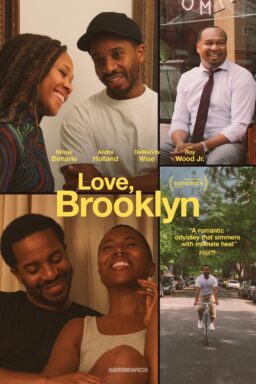From Deke Parsons:
I had the unique opportunity to evaluate the three most common multiplex screen formats last week. I saw “Thor” (or parts of it) in IMAX 3-D, regular digital, and 3-D. No condolences, necessary: I liked the film. I could write you an amazingly fascinating (to me) review on the movie, the Eddas, and the history of Thor comics. However, I thought you might be interested to read some brief observations on the formats as I saw parts of the same film in all three formats practically back-to-back. In the order in which I saw them:
IMAX 3-D: Basically, the parts involving digital effects not in the troll caves looked very good. The 3-D added some interest to the most repetitive beats of Asgardian combat. The 3-D also slightly blurred some edges of figures in motion, but not significantly. However, the brief scenes in Troll Land looked poor: way too dark. It was hard to distinguish any of the characters except for Thor who was helpfully tagged with a red cape. Shooting much of the movie in a bright New Mexican setting was a wise choice for a 3-D movie. I wonder if this is why part of the story is set in New Mexico? There is absolutely no reason for this in the comics mythology: Thor generally has lived in New York along with the offices of Marvel Comics and most of the superhero population, although he did live in Chicago for a time (he liked the winds… seriously!)
An odd side effect of the IMAX itself: it changed the performances of two of the actors in opposite ways. Anthony Hopkins’ performance is enhanced because you can see every crinkle behind the make-up and Odin outfit. Natalie Portman’s performance seemed overly-broad in IMAX because she didn’t exercise similar control of her facial muscles. The IMAX sound was excellent… although it exposed the score as sub-“Iron Man” and sub-sub-John Williams.
Digital 2-D: I’m sorry, but this was terrible. The film was obviously shot for 3-D. True, the Troll scenes were better because they weren’t completely dark and blurry (although this was no loss as the Trolls looked like anaemic members of the Blue Man Group). However, almost all of the other action scenes were worse–it was difficult to tell what was happening in 2-D. The pop of the 3-D was needed so the viewer could identify the digital combatants as they zipped around. The film was shot so the camera would not linger on any character. Thor has a nice red cape to help in telling what he is doing. The lesser characters like the Warriors Three and Sif suffered because it was rarely possible to tell what they were doing in any format (and completely impossible in 2-D). The sound… well, after 20 minutes, a speaker blew-out… sending us into a theater with…
Digital 3-D: The lack of IMAX sound hurt because, again, every edge (sonic or visual) was needed to tell what was going on. The 3-D was vital because of the way the film was shot; in a sense, it was more vital here than in the IMAX because of the lesser space to track the digital objects moving across the screen. However, the 3-D blurring seemed worse than in the 3-D IMAX.
Verdict #1: For the movie as shot, see Thor in an IMAX theater. If you can see IMAX 2-D (if it was even released this way), even better. The size and sound of the IMAX will be enough to help you tell what is going on in the battles without 3-D, and it will look great. Still, except for your wallet, the IMAX 3-D is much better for this movie than digital 2-D.
Verdict #2: But. What if the movie was shot in such a way so that you could see close-ups of the characters in Asgard? Maybe they would have had a personality, maybe the actors could have… made characters. When back-up characters in a 60’s comic book (and this movie is a retro-60s Thor) have much sharper characterizations than in a 21st century movie by Kenneth Branagh… that’s a problem. What if the movie was shot so that in addition to some flying and missile-type shots (which are good, for some shots) you could have see what Thor was actually doing in some of the fights. The character is supposed to have been wrestling and fighting for centuries, shouldn’t he have some moves?
And what if it had been shot in less 3-D-friendly NYC or Chicago instead of New Mexico. Sure, there might have been tired shots of bad guys attacking landmarks. But, then, Thor would also have had to interact with people beyond a small group in what was basically a desert back-lot for fighting. Wouldn’t it have been funny to see Thor really interact with the modern world and wouldn’t there have been a lot more sense of danger with Loki and a robot threatening lots of real people?
So, did 3-D sabotage Thor, making what was for me a fun movie, from what could have been a really good one? Branagh couldn’t improve on Shakespeare, but he had a (2-D) shot at improving on the superhero movie.











